Repetitive patterns are your secret weapon for transforming ordinary mobile photos into visually striking compositions. You'll find them everywhere, from urban landscapes to nature's intricate designs. By focusing on shapes, lines, and textures, you can create rhythm and harmony in your images. Experiment with perspective, symmetry, and color to enhance visual depth and interest. Don't be afraid to break patterns for added impact. Remember, effective use of repetition can guide your viewer's eye and tell a compelling story. Whether you're shooting architecture or close-up nature shots, mastering repetitive patterns will elevate your mobile photography to new heights. There's much more to explore in this powerful technique.
Defining Repetitive Patterns in Photography
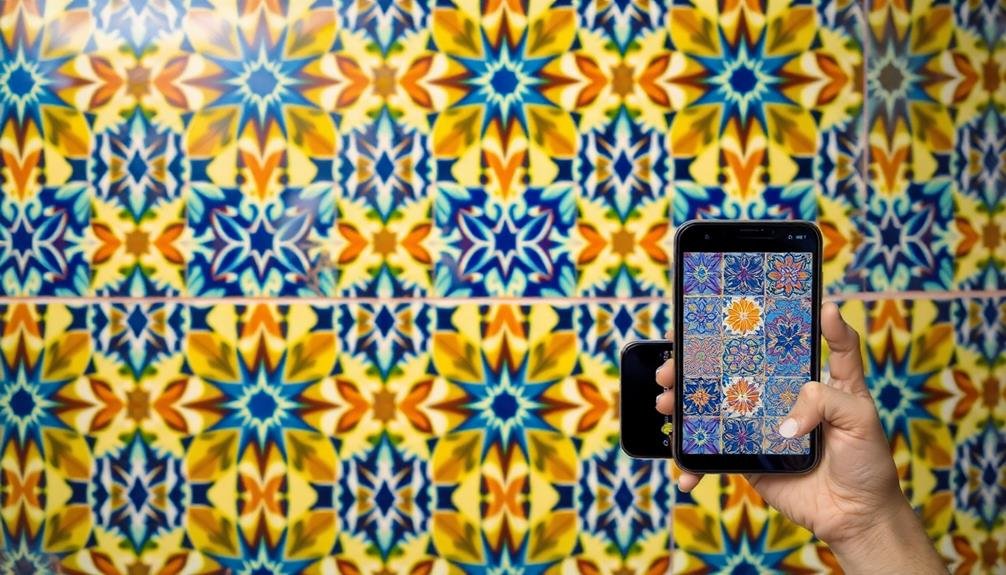
In the domain of photography, repetitive patterns refer to recurring visual elements that create a sense of rhythm and harmony within an image. These patterns can be found in both natural and man-made environments, offering endless opportunities for fascinating compositions. You'll often encounter repetitive patterns in architecture, nature, and everyday objects.
When you're looking for repetitive patterns, focus on shapes, lines, colors, or textures that appear multiple times within a frame. These elements can be identical or slightly varied, but they should maintain a consistent visual theme. Repetitive patterns can be geometric, organic, or a combination of both.
To effectively capture repetitive patterns, you'll need to train your eye to spot them in your surroundings. Start by observing the world around you more closely, paying attention to details you might usually overlook. As you develop this skill, you'll begin to see potential compositions everywhere you go.
Remember that repetitive patterns can create a strong visual impact, drawing the viewer's eye and creating a sense of order within your photograph. They can also be used to convey concepts like infinity, uniformity, or contrast when combined with other elements.
Finding Patterns in Urban Environments
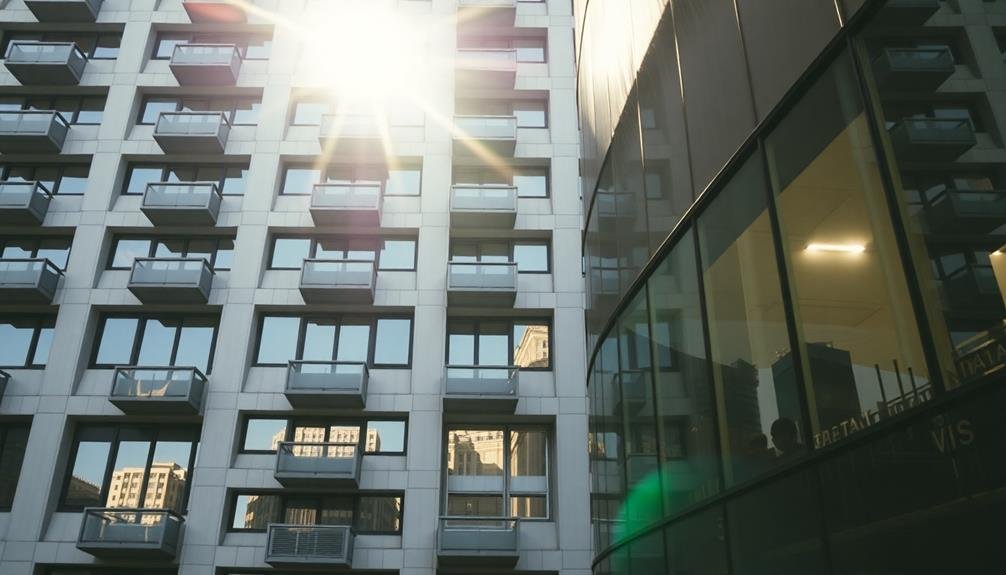
Urban environments are a goldmine for repetitive patterns in mobile photography. As you walk through city streets, you'll find countless opportunities to capture striking geometric shapes and recurring elements.
Look up at skyscrapers to spot rhythmic window patterns or architectural details that repeat across facades. Down at street level, you'll discover patterns in brick walls, sidewalk tiles, and even manhole covers.
Don't overlook everyday objects that create patterns when grouped together. Rows of parked bicycles, stacked shipping containers, or lines of streetlights can make for compelling compositions.
Pay attention to shadows cast by repeating structures, as they often create interesting patterns on the ground or nearby surfaces.
Public transportation hubs are excellent spots for pattern hunting. Train stations, bus terminals, and airports often feature repeating seating arrangements, signage, or structural elements.
Urban parks and gardens can offer natural patterns in landscaping designs or leaf arrangements.
Remember to experiment with different angles and perspectives. Sometimes, changing your viewpoint can reveal patterns that weren't immediately obvious.
Use your mobile device's zoom feature to isolate and emphasize particularly striking repetitions in the urban landscape.
Nature's Repetitive Designs

Nature abounds with repetitive patterns, offering mobile photographers endless opportunities for enchanting shots. You'll find these designs everywhere, from the spirals of a seashell to the symmetry of a flower's petals.
As you explore the natural world with your smartphone camera, you'll discover that these patterns aren't just visually appealing; they're also powerful compositional tools.
To capture nature's repetitive designs effectively, consider these tips:
- Look for fractals: These self-similar patterns, like those found in ferns or snowflakes, create mesmerizing images.
- Focus on textures: Tree bark, sand ripples, and animal scales often feature intricate, repeating patterns.
- Seek out symmetry: Many flowers and leaves display perfect bilateral or radial symmetry.
- Play with reflections: Water surfaces can double the impact of natural patterns.
When shooting these patterns, experiment with different angles and perspectives. Get up close for macro shots that reveal hidden details, or step back to capture the broader context.
Don't forget to use your phone's grid feature to align repetitive elements. By training your eye to spot nature's recurring designs, you'll elevate your mobile photography and create enchanting images that draw viewers in.
Creating Rhythm Through Repetition
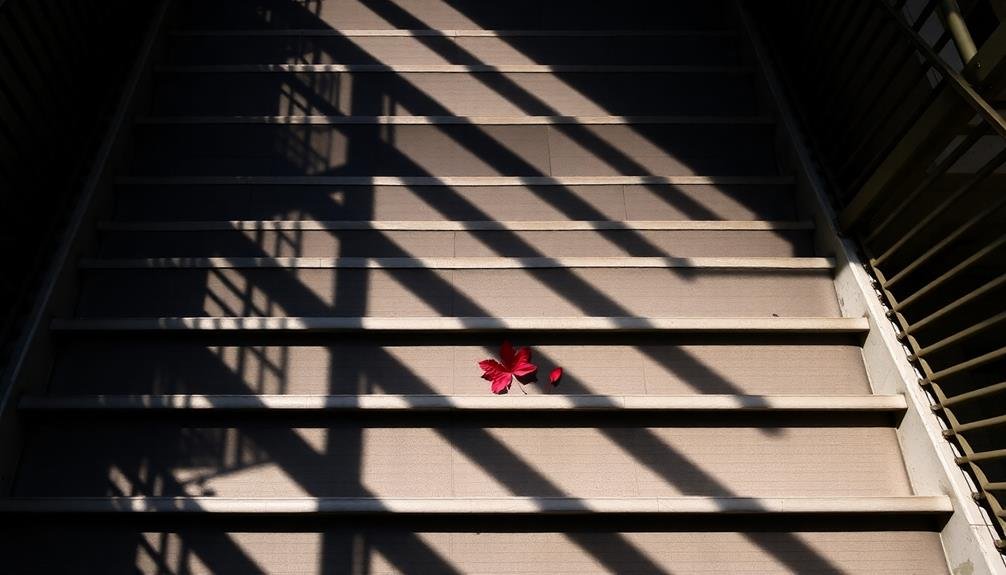
Rhythm in photography can be built up through the clever use of repetition. When you're capturing images with your mobile device, look for elements that repeat in a scene. These could be architectural features, natural patterns, or even groups of people. By framing your shot to include multiple instances of the same or similar elements, you'll create a visual rhythm that draws the viewer's eye through the image.
To enhance this effect, experiment with different compositions. Try aligning repeating elements along diagonals, curves, or in symmetrical arrangements. You can also play with perspective by getting closer to your subject or finding a unique angle. This can make the repetition more pronounced and impactful.
Don't forget about color and light. Repeating hues or alternating light and shadow can add another layer of rhythm to your photos. Use your mobile device's editing tools to fine-tune contrast and saturation, emphasizing the repetitive elements.
Breaking the Pattern

While repetition creates rhythm, breaking the pattern can add a powerful focal point to your mobile photography. By introducing an unexpected element or disruption, you'll draw the viewer's eye and create visual interest. This technique, known as a "pattern interrupt," can transform an ordinary image into something extraordinary.
To effectively break a pattern in your mobile photos:
- Look for naturally occurring interruptions, like a red flower in a field of white daisies.
- Introduce a contrasting element, such as a person walking through a repeating architectural feature.
- Use negative space to create a break in a busy pattern.
- Experiment with different angles or perspectives to disrupt the repetition.
When you're composing your shot, consider the rule of thirds to place your pattern break strategically. You can also use editing apps to enhance the contrast between the pattern and the interruption.
Remember, the goal is to create balance between the repetitive elements and the break. Too subtle, and it might go unnoticed; too obvious, and it could overwhelm the composition.
Practice this technique to add depth and intrigue to your mobile photography.
Symmetry and Asymmetry
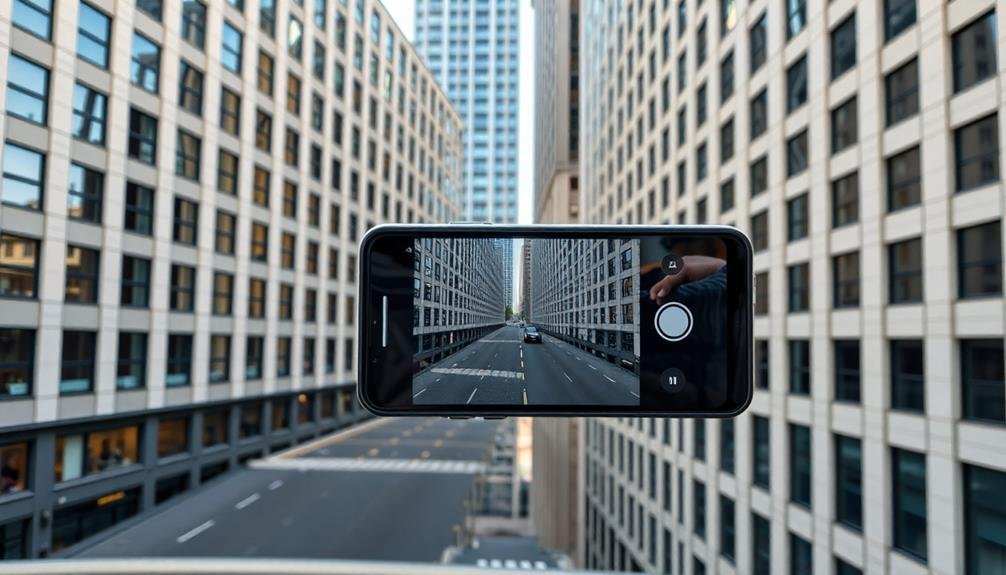
When exploring symmetry and asymmetry in repetitive patterns, you'll find balance plays an essential role in composition.
You can create striking images by capturing perfect reflections or mirroring elements within your frame.
However, don't be afraid to break the pattern strategically, as introducing asymmetry can add visual interest and draw attention to specific areas of your mobile photograph.
Balance in Composition
Balance, a fundamental principle in visual arts, plays an essential role in mobile photography, especially when capturing repetitive patterns.
When you're composing your shot, you'll need to contemplate how different elements interact to create a harmonious image. This doesn't always mean perfect symmetry; asymmetrical balance can be equally effective in creating visually appealing photographs.
To achieve balance in your repetitive pattern shots, reflect on these tips:
- Use the rule of thirds to place key elements off-center
- Incorporate negative space to give your patterns room to breathe
- Experiment with color balance to create visual interest
- Play with scale, mixing large and small repetitive elements
Reflection and Mirroring
Reflections and mirroring offer powerful techniques for creating symmetry and asymmetry in repetitive pattern photography. When you're out shooting with your mobile device, look for opportunities to capture reflections in water, glass, or polished surfaces. These can create stunning symmetrical compositions that draw the viewer's eye.
To create asymmetry, try positioning your subject off-center or capturing partial reflections. You'll find that even slight imperfections in the reflection can add intrigue to your image. Experiment with different angles and perspectives to maximize the impact of reflections and mirroring in your shots.
Consider the emotional impact of symmetry and asymmetry in your compositions:
| Symmetry | Asymmetry |
|---|---|
| Calm | Dynamic |
| Balanced | Tension |
| Harmonious | Intriguing |
| Formal | Informal |
Breaking the Pattern
While symmetry and reflections can create visually appealing compositions, breaking patterns intentionally can add a whole new dimension to your mobile photography. By introducing asymmetry or disrupting repetitive elements, you'll create visual interest and draw the viewer's eye to specific areas of your image.
To effectively break patterns in your mobile photography, consider these techniques:
- Introduce a contrasting element: Place an object that stands out in color, shape, or size within a repetitive pattern.
- Use negative space: Create an intentional gap in a pattern to highlight a specific area or subject.
- Alter perspective: Shoot from an unexpected angle to distort or interrupt a pattern's regularity.
- Play with focus: Selectively blur parts of a pattern while keeping others sharp to create depth and emphasis.
Experiment with these methods to find the right balance between order and chaos in your compositions.
Remember, breaking patterns doesn't mean completely abandoning structure; it's about creating a focal point that captures attention and tells a story.
Using Leading Lines

Leading lines are powerful tools in your mobile photography arsenal.
You'll use them to guide viewers' eyes through your image, create a sense of depth, and effectively frame your focal points.
Guide Viewer's Eye
One of the most powerful techniques in mobile photography is guiding the viewer's eye through the use of leading lines.
These lines naturally draw attention and create a path for the eye to follow, enhancing the image's composition and impact. When you're out capturing scenes with your smartphone, look for elements that can serve as leading lines, such as roads, fences, or even shadows.
To effectively guide your viewer's eye:
- Identify strong linear elements in your scene
- Position these lines to lead toward your main subject
- Experiment with different angles to maximize the line's impact
- Use converging lines to create a sense of depth and perspective
Create Depth Perception
Creating depth perception in mobile photography can transform a flat image into a visually engaging composition. By utilizing repetitive patterns with leading lines, you'll guide the viewer's eye into the scene, creating a sense of depth and dimension.
Look for patterns that naturally recede into the distance, such as rows of trees, fence posts, or architectural elements. Position yourself to capture these patterns in a way that draws the eye from the foreground to the background.
When shooting, try lowering your camera angle to emphasize the converging lines of the pattern. This technique amplifies the illusion of depth, making the image more dynamic.
Don't be afraid to experiment with different perspectives; sometimes, a slight shift in position can dramatically alter the perceived depth.
In post-processing, you can enhance the depth effect by adjusting contrast and sharpness along the leading lines. Subtle vignetting can also help direct focus towards the center of the image, reinforcing the sense of depth.
Frame Focal Points
Repetitive patterns can zero in on your image's focal point when combined with leading lines. By strategically framing your subject with repeating elements, you'll guide your viewers' eyes exactly where you want them to look. This technique not only adds visual interest but also creates a sense of order and structure within your mobile photography.
To effectively use repetitive patterns as framing devices, consider these tips:
- Look for natural lines in your environment, such as rows of trees, fence posts, or architectural features.
- Position your subject at the end of these leading lines to draw attention to it.
- Use symmetry to your advantage by centering your focal point within the repeating pattern.
- Experiment with different angles to find the most compelling composition.
When you're out shooting, train your eye to spot potential framing opportunities. Urban environments often offer a wealth of repetitive elements, from windows and staircases to street lamps and road markings.
In nature, you might find patterns in rock formations, waves, or leaf arrangements. By incorporating these recurring motifs into your mobile photography, you'll create images that are both visually striking and compositionally sound.
Framing Techniques for Patterns
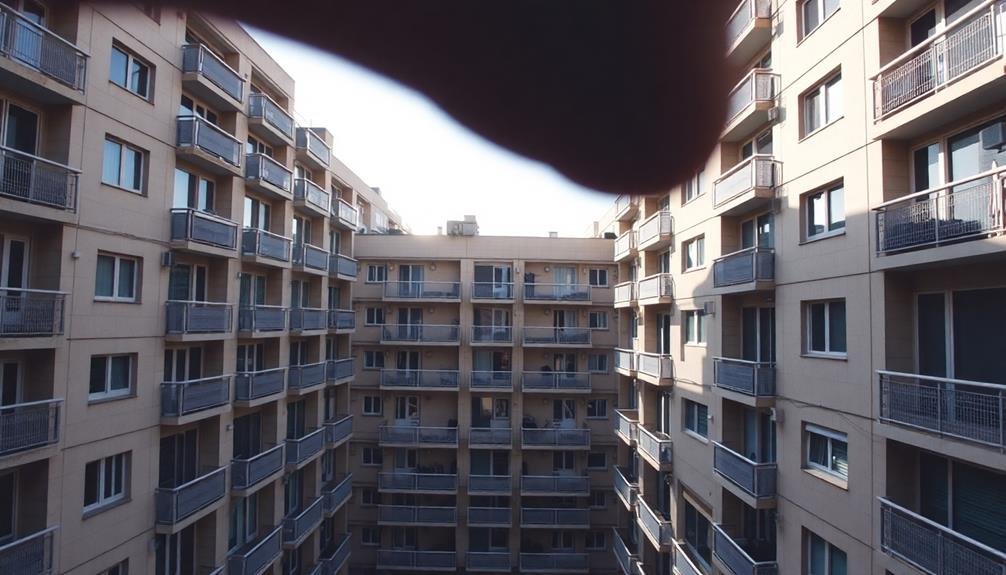
Framing techniques can make or break your pattern-focused mobile photography. To capture compelling repetitive patterns, you'll need to master various framing methods. Start by identifying the pattern's core elements and deciding how much of it you want to include in your shot.
Consider these framing techniques for different pattern types:
| Technique | Geometric Patterns | Natural Patterns |
|---|---|---|
| Fill Frame | Use entire screen for maximum impact | Show texture details in close-ups |
| Rule of Thirds | Place pattern intersections on grid lines | Highlight pattern variations |
| Symmetry | Center the pattern for balance | Showcase nature's ordered chaos |
When framing patterns, pay attention to edges. You can either crop tightly to create an infinite pattern effect or include borders to provide context. Experiment with different angles to find the most visually appealing perspective. Try shooting straight-on for formal compositions or at an angle for dynamic shots.
Don't forget to use your phone's grid feature to guarantee straight lines and proper alignment. For intricate patterns, use the focus tool to highlight specific areas. Remember, effective framing can transform a simple pattern into a striking visual masterpiece.
Playing With Perspective

Perspective plays an essential role in capturing repetitive patterns with your mobile phone. By changing your viewpoint, you'll transform ordinary scenes into extraordinary compositions.
Don't be afraid to crouch, climb, or contort yourself to find the perfect angle. Experiment with shooting from low angles to emphasize leading lines or from high vantage points to reveal hidden patterns.
Consider these four perspective techniques to enhance your repetitive pattern photography:
- Bird's eye view: Climb to a higher position and shoot downwards to reveal geometric patterns in urban landscapes or natural formations.
- Worm's eye view: Get low to the ground and point your camera upwards, capturing patterns in architecture or foliage against the sky.
- Forced perspective: Use optical illusions to create depth and interest by aligning patterns at different distances.
- Symmetry: Find a central point and frame your shot to create mirror-like reflections or balanced compositions.
Color and Contrast in Patterns
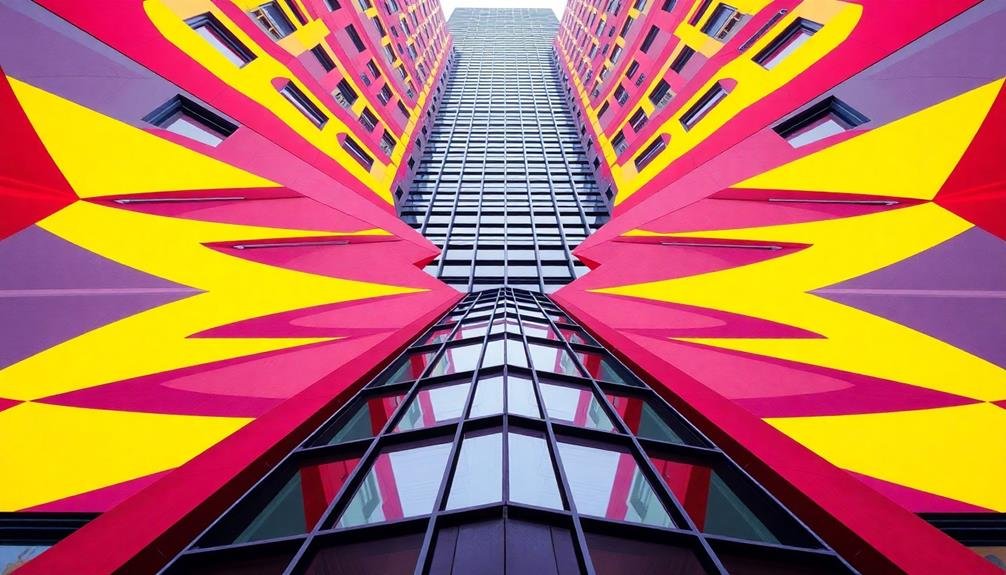
While patterns themselves can create visual interest, color and contrast play essential roles in elevating your repetitive pattern photography. By manipulating these elements, you'll add depth and dimension to your images, making them more enchanting and memorable.
First, consider the color palette of your pattern. Complementary colors can create striking contrasts, while analogous colors offer a more harmonious feel. Don't be afraid to experiment with bold, vibrant hues or soft, muted tones to convey different moods.
Contrast is equally important. High contrast can make patterns pop, while low contrast can create a more subtle, ethereal effect. Play with lighting to enhance contrast naturally, or use editing tools to adjust it in post-processing.
Here's a quick guide to color and contrast combinations:
| Color Scheme | Contrast Level | Mood |
|---|---|---|
| Monochromatic | Low | Calm, sophisticated |
| Complementary | High | Energetic, bold |
| Analogous | Medium | Harmonious, balanced |
Editing Apps for Enhancing Patterns
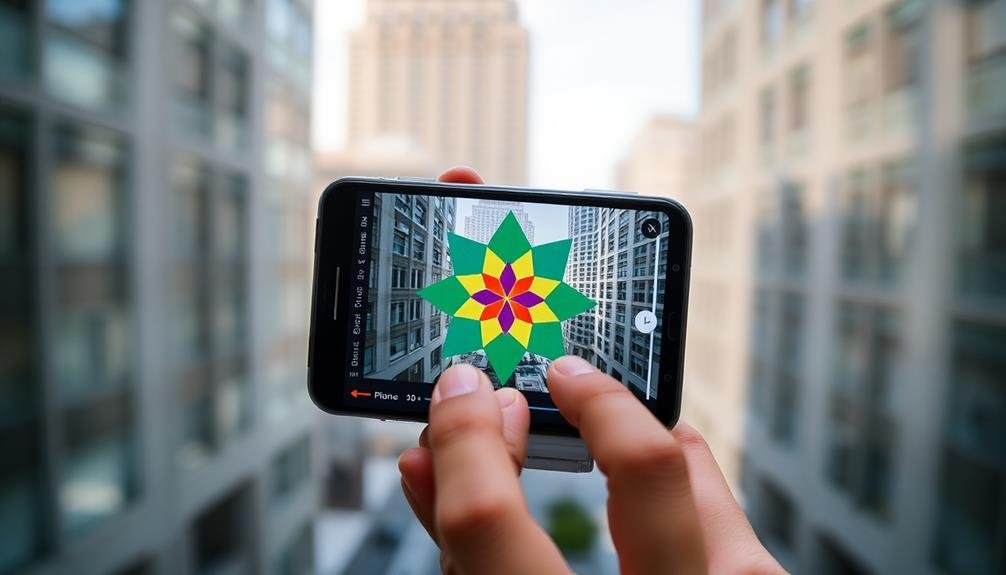
In addition to capturing compelling patterns with your mobile device, you'll want to leverage editing apps to enhance and perfect your images. These tools can help you accentuate repetitive elements, adjust contrast, and create striking visual effects that elevate your pattern photography.
When selecting editing apps for pattern enhancement, consider these key features:
- Symmetry tools: Look for apps that offer mirror effects or symmetry adjustments to create mesmerizing kaleidoscopic patterns from your original shots.
- Selective editing: Choose apps with brush tools that allow you to enhance specific areas of your pattern without affecting the entire image.
- Curve adjustments: Opt for apps that provide advanced curve editing capabilities, enabling you to fine-tune contrast and color balance within your patterns.
- Texture overlays: Select apps that offer texture addition features, allowing you to incorporate subtle or dramatic textures to your pattern images.
Popular editing apps like Snapseed, VSCO, and Adobe Lightroom Mobile offer many of these features. Experiment with different apps to find the ones that best suit your editing style and pattern enhancement needs.
Storytelling Through Repetitive Elements
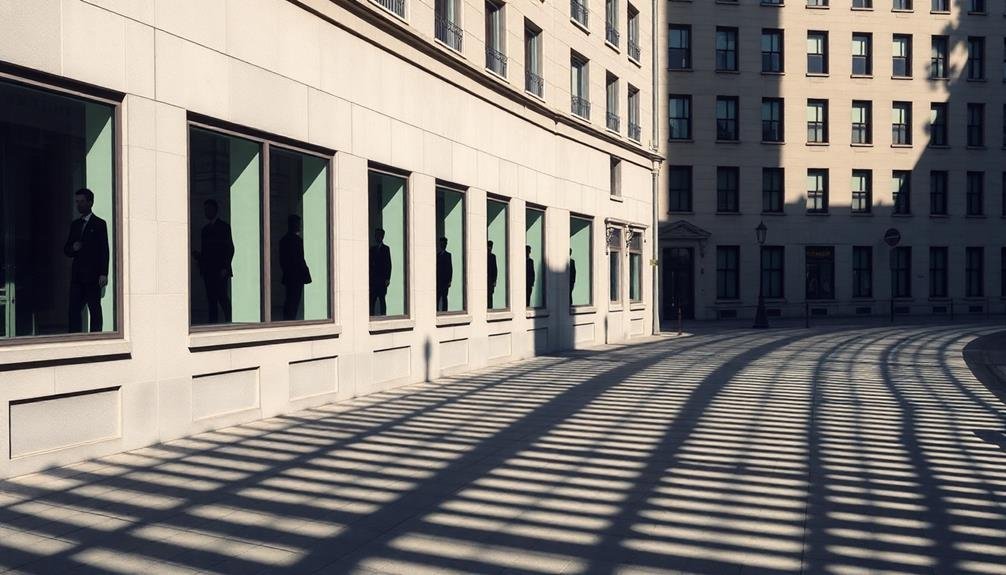
You can evoke powerful emotions through recurring motifs in your mobile photography.
By strategically repeating certain elements, you'll create a visual rhythm that guides viewers through your narrative.
This technique allows you to craft compelling stories within a single image or across a series of photos, drawing your audience deeper into the world you've captured.
Emotions Through Recurring Motifs
Repetition in mobile photography isn't just about aesthetics; it's a powerful tool for storytelling and evoking emotions. By incorporating recurring motifs in your images, you can create a visual language that resonates with your audience on a deeper level.
These repeated elements can evoke specific feelings, memories, or associations, enhancing the emotional impact of your photographs.
To effectively use recurring motifs in your mobile photography:
- Choose a central theme or emotion you want to convey
- Identify visual elements that represent this theme
- Incorporate these elements consistently across your images
- Experiment with different compositions to keep your motifs fresh
As you develop your style, you'll find that certain recurring elements become your signature. They'll help viewers instantly recognize your work and connect with the emotions you're trying to convey.
Remember, the key is subtlety; you don't want to overwhelm your audience with repetition. Instead, use it as a gentle nudge to guide their emotional journey through your images.
Rhythm in Visual Narratives
Rhythm pulses through visual narratives, giving life to your mobile photography stories. As you capture scenes with your smartphone, consider how repetitive elements create a visual beat. This rhythm guides viewers' eyes through your images, building anticipation and momentum.
To craft compelling visual narratives, use recurring motifs strategically. Experiment with repeating shapes, colors, or subjects across multiple frames. This technique establishes continuity and reinforces your story's theme. For example, if you're documenting urban life, you might focus on repeating architectural features or street signs.
Consider these emotional responses to different rhythmic patterns in your visual storytelling:
| Pattern Type | Emotional Impact |
|---|---|
| Steady | Calm, Stable |
| Accelerating | Excitement, Urgency |
| Staccato | Tension, Energy |
| Flowing | Serenity, Grace |
| Syncopated | Surprise, Intrigue |
Frequently Asked Questions
How Can I Avoid Making Repetitive Patterns Look Monotonous in My Photographs?
To avoid monotonous repetitive patterns, you'll want to experiment with angles, lighting, and focal points. Try breaking the pattern with a contrasting element, playing with depth of field, or incorporating interesting shadows to add visual interest.
What Camera Settings Are Best for Capturing Intricate Patterns on Mobile Devices?
You'll want to use a low ISO, small aperture (high f-number), and fast shutter speed for sharp details. Enable HDR mode, tap to focus on the pattern, and use grid lines to align your shot perfectly.
Are There Specific Times of Day Ideal for Photographing Patterns Outdoors?
You'll find the best times for outdoor pattern photography are early morning or late afternoon. The low-angled sunlight creates long shadows, enhancing textures and contrasts. Midday's harsh light can wash out details, so avoid it if possible.
How Can I Incorporate Human Elements Into Photographs Featuring Repetitive Patterns?
You can add human elements to pattern photos by including people as part of the pattern, capturing shadows cast by individuals, or framing a person within repetitive structures. Try using crowds or single subjects to contrast with geometric backgrounds.
What Are Some Common Mistakes to Avoid When Shooting Repetitive Patterns?
When shooting repetitive patterns, don't overcrowd your frame or lose focus. You'll want to avoid symmetry-breaking elements, poor lighting, and camera shake. Also, don't forget to experiment with different angles and perspectives for unique shots.
In Summary
You've now opened the power of repetitive patterns in mobile photography. They're everywhere, waiting for you to discover and capture them. Don't be afraid to experiment with perspective, color, and contrast. Break patterns when needed, and use editing apps to enhance your shots. Remember, patterns aren't just visually appealing; they can tell stories too. So keep your eyes open and your camera ready – you'll never see the world the same way again.

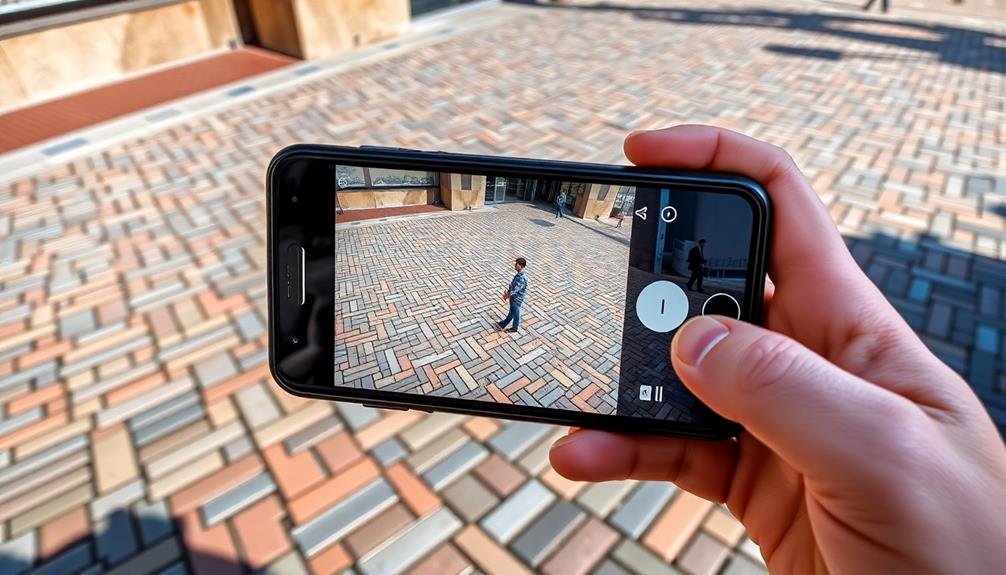



Leave a Reply